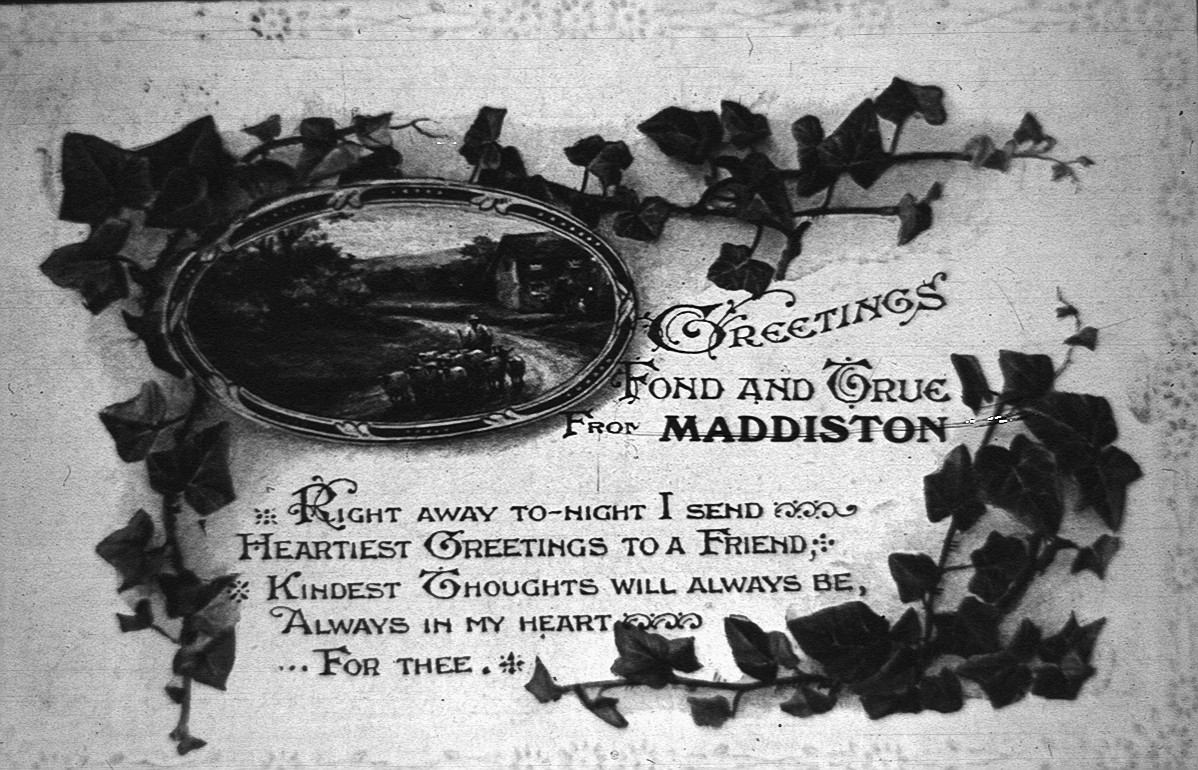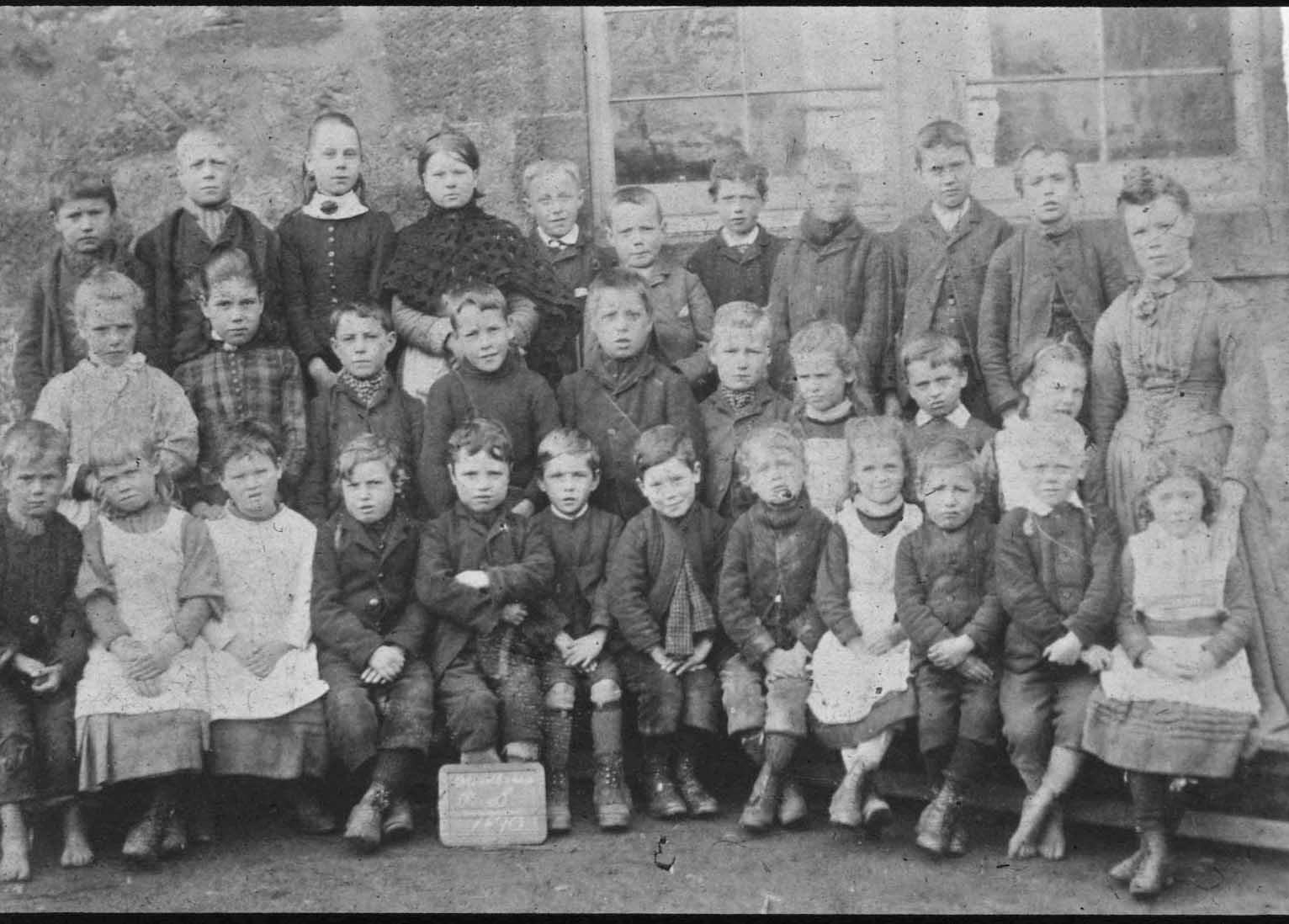David Leask and the Maddiston and Rumford Local History Group remember growing up in Maddiston and the “gemmes we used to play.”
Oh the gemmes we played when we were weans, nae computers, hardly any telly but we could enjoy oorsels withoot them!! We didnae need them!
fields['text']) echo $section->fields['text']; ?>
Many games we played as children are still played now but many are in danger of being forgotten altogether in this day of readymade entertainment.
Kites, Tops & Rushie Baskets
Whips and Peeries were spinning tops with chalk designs drawn on them, and dragons (kites) were made from brown paper and a bow of the butter barrel from the co-op, and a string tail with newspaper bows attached to it. Rushes grew in profusion down by the level, at the back of Simpson Drive, and at Rainhill. The girls made “rushie baskets,” hats and skirts with them. We’d also vault over the burn with sticks (doaking), build trenches, steal birds eggs, play with yoyos made from two big buttons, and have “chessie” fights with conkers on strings, baked or soaked in vinegar to harden them.
Can Games
Kick the Can was like hide-and-seek, someone kicked the can, and while everyone disappeared, the kicker counted to 100 and had to find the others. Anyone could sneak in and kick the can and bawl "free the den" freeing anyone caught while the kicker had to retrieve the can. When playing Fire Can, you took a syrup can with holes punched in it and a string tied on it, filled with anything that would burn (wee churls of coal raked out from under the coalhouse would do - if you didn't get caught). The fire was lit and once it was going it was burled round to keep it that way. Alternatively, you could put in some carbide, spit on it to get the gas, jam the lid on, then put your foot on it, light the gas and the lid shot off. A Singing Can was the can without the fire, burled to make it "sing." You used different sizes for different noises, put holes in the can, tied string on and whirled it round to make a noise.
Tee Tip Toe (sticks and stanes) and Stars (chuckies)
Sticks and stanes is a two player game which involves drawing a square with lines like the union jack. One player had three sticks, the other three "stanes." Starting on the straight each player tried to manoeuvre their pieces into line on a diagonal. Stars or chuckies requires five chuckies (small smooth stones) or five stars (metal stars used in the foundries to clean castings). These chuckies were thrown in the air and caught on the back of the hand, then thrown back up again and caught in the palm. However many were caught were laid aside and the rest were picked up one at a time while throwing one up and catching it again after picking one from the ground. The game then proceeded with increasing complexity, involving harder and harder throwing, catching and collecting combinations.
Quoits and Bools
We also played quoits with cast iron rings 14-18 pounds in weight and maybe 10 inches in diameter, with holes in the body filled with lead to regulate the weight. The quoiting rink was a circular pit of clay puddle about 10 inches deep with a steel spike (the “tee”) driven into the centre, which the rings were thrown over. This was a great spectator sport. There were rinks in the surrounding villages and teams travelled all around the mining areas playing each other. We also played “bools” (boules) carrying our "glessies" (balls) about in a sock.
A Big Ship Sails On The Eilly Ally O
One girl stood with arms outstretched, one arm against the wall. The others did the same behind her, and the last in line went round under the arm of the first girl, with all her companions following on behind. She then did the same again through the each set of arms until everyone ended up with their arms crossed, then the first and last girls joined hands. As they played they sang:
The big ship sails on the Eilly ally o'
fields['text']) echo $section->fields['text']; ?>
The eilly ally o' The eilly ally o'
The big ship sails on the eilly ally o'
On the last day of September
After joining hands the girls danced around singing:
"The big ship sinks to the bottom of the sea
Bottom of the sea" etc.
Slowly going down on their hunkers they sang, before springing up to standing again:
"Ally Bally Ally Bally Who's Got The Ball
Ally Bally Ally Bally Who's Got The ball
I Haven't Got It In My Pocket
Ally Bally Ally Bally Who's Got The ball;"
Then someone stood with their back to the group and threw the ball over their head. Whoever caught it hid it behind their back, the rest of the group hid their hands behind their backs and the thrower had to guess who had the ball.
Peevers
If you were lucky you'd have a peever made from metal or stone but a Cherry Blossom polish tin would do just as well. You’d draw a bed of squares, throw the peever into one, and hop into two. Then three then four, then into ten, back through three and two, picking up the peever on the way. The game then went on to two, three, and so on, but if the players foot went on a line they'd be out. Alternatively the player could skiff the peever around with their hopping foot but if the peever came to rest on a line they'd be out. There were several different ways of playing this game.
Girds and Cleeks
Proper girds and cleeks were made by the local blacksmith with the cleek either attached or not, but that never stopped anyone from having a gird and cleek. You could use a hoop from a barrel and a bit of stick for a cleek, or a bike wheel with the spokes removed and a bit of fence wire for a cleek. The trick was learning how to keep it going, up and down hills, and round corners for miles!
Pitch and Toss
This was a well-known gambling game in the mining areas where the participants threw two pennies in the air and bet on how they would land. A lot of money was won and lost around the villages on this illegal pastime and even the younger boys made something as look outs as the "polis" were ever watchful for a crowd of men in some of the more hidden areas around the villages.
By David Leask of David Leask’s Maddiston Pages and the Maddiston and Rumford Local History Group.

